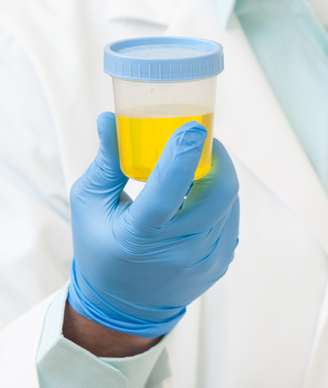Urinary Test for HPV Could Offer Noninvasive Cervical Cancer Screening
Testing for HPV infections in urine could be an extremely accurate way to exclude the possibility of such infections and screen for cervical cancer.
Image © imging / Shutterstock.com

Testing for human papillomavirus (HPV) infections in urine could be an extremely accurate way to exclude the possibility of such infections and screen for cervical cancer, according to a new study. The urinary testing includes HPV types not included in vaccines.
High-risk HPV infections (HR-HPVs) are the most important risk factor for developing cervical cancer as well as the cancer precursor lesions known as cervical intraepithelial neoplasias (CINs). “Testing for HPVs in samples other than cervical cells such as urine samples, which are noninvasive and easy to collect, could be more attractive to women because it bypasses medical examination, a significant barrier for women in the developing world for sociocultural or religious reasons,” wrote study authors led by Chandrika J. Piyathilake, PhD, of the University of Alabama at Birmingham.
Earlier studies have suggested that urinary testing could be an accurate way to screen for HPV, but data remained lacking on accuracy of CIN prediction and on how testing might differ by body weight or race. The new study included 502 women enrolled in two studies who were diagnosed with abnormal cervical cells, and then compared urinary testing with testing of cervical cells. The results were published in Cancer.
The urinary test agreed very well with cervical cell testing. Of the 502 women, 344 were positive for any HPV on both tests, and 79 were negative on both tests; 72 had a negative urine test but a positive cervical cell DNA test, and 7 had the opposite result. This gave a crude concordance rate of 0.84, and an agreement of 0.75 (95% CI, 0.70–0.81) using another measure of agreement known as agreement coefficient 1 (AC1).
For specifically HR-HPVs, the crude concordance rate was 0.83, and the AC1 agreement was 0.67 (95% CI, 0.61–0.74). For HPV-16 or HPV-18, which are responsible for most cancer cases, the crude concordance was 0.94 and the AC1 agreement was 0.91 (95% CI, 0.88–0.94). The researchers considered agreement between 0.81 and 1.0 as “almost perfect agreement.”
Importantly, the degree of agreement did not differ when the population was stratified by age, race, indicators of excess body weight, and presence or absence of CIN-2 or higher lesions.
The researchers also analyzed the positive and negative predictive value for detecting CIN lesions according to the presence of HR-HPV detected by both the cervical and urinary testing methods. The urinary test had low positive predictive value, but very high negative predictive value, suggesting the test would be appropriate for identifying low-risk women. For CIN-2 lesions, the negative predictive value was 92.4 (95% CI, 88.1–95.5); for CIN-3, it was 95.8 (95% CI, 92.2–98.1).
Though the overall pattern was similar, there were slight differences in negative predictive value based on certain population specifics. For example, the negative predictive value for detecting CIN-2 based on urinary HR-HPV results was 88% for white women, and 89% for women with a body mass index below 25 kg/m2.
“We have demonstrated that urinary HPV testing, a noninvasive approach, provides highly satisfactory results for excluding the possibility of any cervical HPV infection, including HPV types not included in vaccines and CIN lesions associated with any HR-HPV, regardless of a woman’s age, race, or excess body weight, and it will overcome barriers for screening for cervical cancer in developed and developing countries,” the authors concluded.
Newsletter
Stay up to date on recent advances in the multidisciplinary approach to cancer.